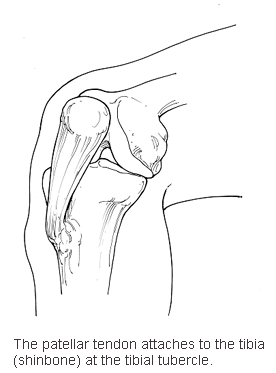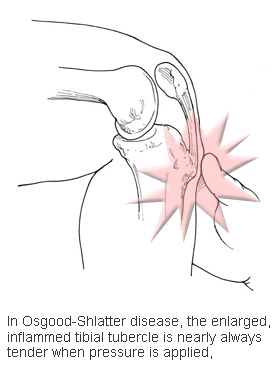Osgood-Schlatter Disease (Knee Pain)
These articles are for general information only and are not medical advice. Full Disclaimer. All articles compliments of the AAOS
Description
A common form of growing pains or overuse in early adolescence involves the shinbone and the knee. The shinbone (tibia) has a raised area just below the kneecap called the tibial tubercle. The tubercle has two important functions:
- It contributes to the growth of the leg
- It is where the thigh muscle attaches to the shinbone through the kneecap tendon
Symptoms
Swelling, enlargement of the tubercle and pain are common in kids with year-round sports schedules.
Risk Factors and Prevention
Those who participate in certain sports are at risk. These sports include soccer, gymnastics, basketball and distance running.
Treatment Options
Once the diagnosis is made, treatment is aimed at diminishing the severity or intensity of the pain and swelling. Treatment of symptoms includes taking scheduled doses of Advil or Aleve, and wrapping the knee. This is recommended until the child can enjoy sports activities without discomfort or significant pain afterwards. Weakness and pain that gets worse with activity may require rest for several months, followed by a conditioning program. In some susceptible teenagers, Osgood-Schlatter symptoms may last for 2 to 3 years. However, most symptoms will completely resolve with completion of the growth spurt. This happens at around age 14 for girls and 16 for boys.


